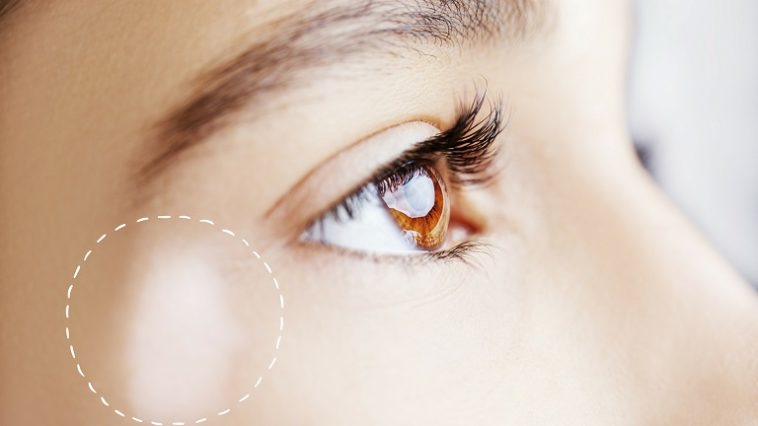The spreading tendency of vitiligo patches is unpredictable. However, in the case of segmental vitiligo, the affected area of the skin usually does not expand with time. About 10% of vitiligo cases are segmental. A tissue biopsy can help an expert establish the difference. In few cases, both non-segmental and segmental vitiligo can co-exist, which is known as Mixed Vitiligo in common language. Too much information to process? Don’t worry. To help you know segmental vitiligo much better, here is your first-hand knowledge guide:
What is Segmental Vitiligo?
Segmental vitiligo is depigmentation of patches of skin, hair, mucous (inside the mouth or nose) or eyes on typically just one side of an individual’s body. The spots (usually chalk-white in color with well-demarcated margins) often emerge on areas of skin that are exposed to the sun (commonly hands, face, neck, and legs). They range in size from millimeters to centimeters and are more prone to sunburn.
Since segmental vitiligo has an early onset, it typically is found in young children. From infancy to adulthood, the majority of cases occur before age 30. The total area of affected skin varies from person to person.
Even though segmental vitiligo is not life-threatening and contagious, it can lead to psychological stress and depression. Many vitiligo fighters report low self-esteem, anxiety, and other mood disorders. Due to poor self-image, people may avoid going out in public and may limit their social interaction.
Possible Causes of Segmental Vitiligo
While many feel that segmental vitiligo is a separate entity than generalized vitiligo, recent evidence suggests that segmental and nonsegmental vitiligo could represent variants of the same skin disorder spectrum. This makes many researchers argue that its causes are similar to nonsegmental vitiligo too.
While the exact cause of segmental vitiligo is still unknown and subject to many research studies, it has been linked closely to genetics. Based on other research studies, it is believed to be caused by:
- The destruction of melanocytes (the cells responsible for pigmentation)
- The inactivity of melanocytes
- Hormonal changes
- Recurrent episodes of jaundice or typhoid fever
- Prolonged antibiotic treatments
- Usage of heavy immunosuppressant drugs
Some experts even suggest that the intake of insecticide/pesticide treated vegetables, critical sunburn, harm to the skin due to cut, exposure to some chemicals, odd food combinations, regular junk food intake and negligence in hygiene can cause segmental vitiligo. Due to conflicting results of different studies, mental stress along with all factors mentioned above have not been proven to cause segmental vitiligo.
Treatment options for Segmental Vitiligo
In segmental vitiligo, white patches initially spread quickly, and stop spreading after 1-2 years. This is why it tends to respond well to treatment. Many people have found UV light therapy, applying certain steroid hormone creams or a skin graft helpful. Some respond to drugs targeting the immune response in combination with antioxidant agents, while some may get benefitted by stress management practices. However, finding the cure for segmental vitiligo is still subject to many ongoing studies. Some of the popular treatment options are:
Surgical methods: A surgeon removes good patches of the person’s pigmented skin and grafts them to cover affected areas. Some of the surgeries to correct segmental vitiligo are:
- Miniature punch grafting (bits of skin about 2 mm in diameter are punched out and placed on the affected skin)
- Suction blister grafting (negative pressure is applied to promote the formation of multiple blisters in affected areas)
- Split-thickness skin grafting (involves shaving off thin layers of skin from the affected area to produce uniform pigmentation)
- Autologous non-cultured epidermal cell suspensions
Phototherapy with UVB light: Exposure to ultraviolet B (UVB) lamps is emerging as a common method to treat segmental vitiligo. While full-body treatment is done at a healthcare facility, home treatment requires a small lamp for daily use. Many people have reported achieving over 90% repigmentation within a year.
Phototherapy with UVA light: UVA Phototherapy is often prescribed with a drug that increases the affected skin’s sensitivity to UV light. In a series of treatments, white patches are exposed to high doses of UVA light.
Steroid creams: In some cases, applying topical corticosteroids can result in total restoration of the original skin color. A form of vitamin D, Calcipotriene can also be used as a topical ointment.
Skin camouflage: Many vitiligo fighters can use camouflage to conceal patches. Most such topical applications (cosmetic creams and makeup) are waterproof.
Tattooing: Artificial pigments are implanted into the skin through tattooing. However, the process often includes difficulty matching the color of skin and the fact that tattoos ultimately fade out.
Latest findings
Few research results suggest that, contrary to common belief, some people with segmental vitiligo may not experience stability over an extended period. Recurrence can take place after years of stability. In fact, many vitiligo fighters experience the recurrence of white patches in spite of treatment. Hence, long-term follow-up data are required to characterize the nature of segmental vitiligo.

